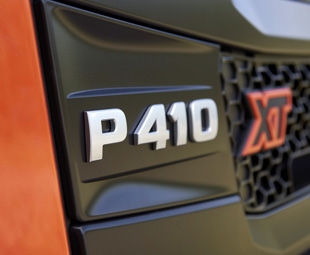Scania’s new generation begins construction

Scania has launched the all-new XT truck range specifically designed for the construction industry, and it is certainly attracting its share of attention.
The new construction range is the second stage in Scania’s introduction of new-generation trucks – the fruits of more than ten year of development with an investment exceeding €2 billion (R31,28 billion).
“This industry is facing increasing demands for sustainable and cost-effective production. Each component in  the complex construction logistics process must adapt to higher standards of efficiency. The Scania XT is our contribution to this shift,” says Scania president and CEO Henrik Henriksson.
the complex construction logistics process must adapt to higher standards of efficiency. The Scania XT is our contribution to this shift,” says Scania president and CEO Henrik Henriksson.
Following an extensive analysis of the multi-faceted construction industry, the XT range has been designed to meet the highly diverse transport assignments within the sector.
The XT treatment is applicable to the entire range of cab and engine specifications, from the smallest P-series cab to the spacious S-series cab. Customers can select engines with power outputs ranging from 208 to 544 kW (280 to 730 hp).
According to Scania, the introduction of the XT range marks the start of a targeted offensive with tailor-made solutions focused on demanding customers in Europe.
“We are putting a higher emphasis on construction,” states Henriksson. “We now have the right products, the right services and the right skills to match Scania’s leading position in long-distance vehicles.”
 Transporters in the construction industry normally form part of a larger process, and it is crucial for them to avoid disruptions. In addition to tough and durable vehicles, Scania has, therefore, created an entire ecosystem of services to ensure uninterrupted deliveries while improving customers’ profitability.
Transporters in the construction industry normally form part of a larger process, and it is crucial for them to avoid disruptions. In addition to tough and durable vehicles, Scania has, therefore, created an entire ecosystem of services to ensure uninterrupted deliveries while improving customers’ profitability.
“The global construction industry continues to grow and Scania now presents enhanced tools to meet the demand,” says Henriksson. “We are well aware of the slim margins for many hauliers in this business and we have developed vehicles and solutions to ensure sustained profitability,” he concludes.
Published by
Focus on Transport
focusmagsa




